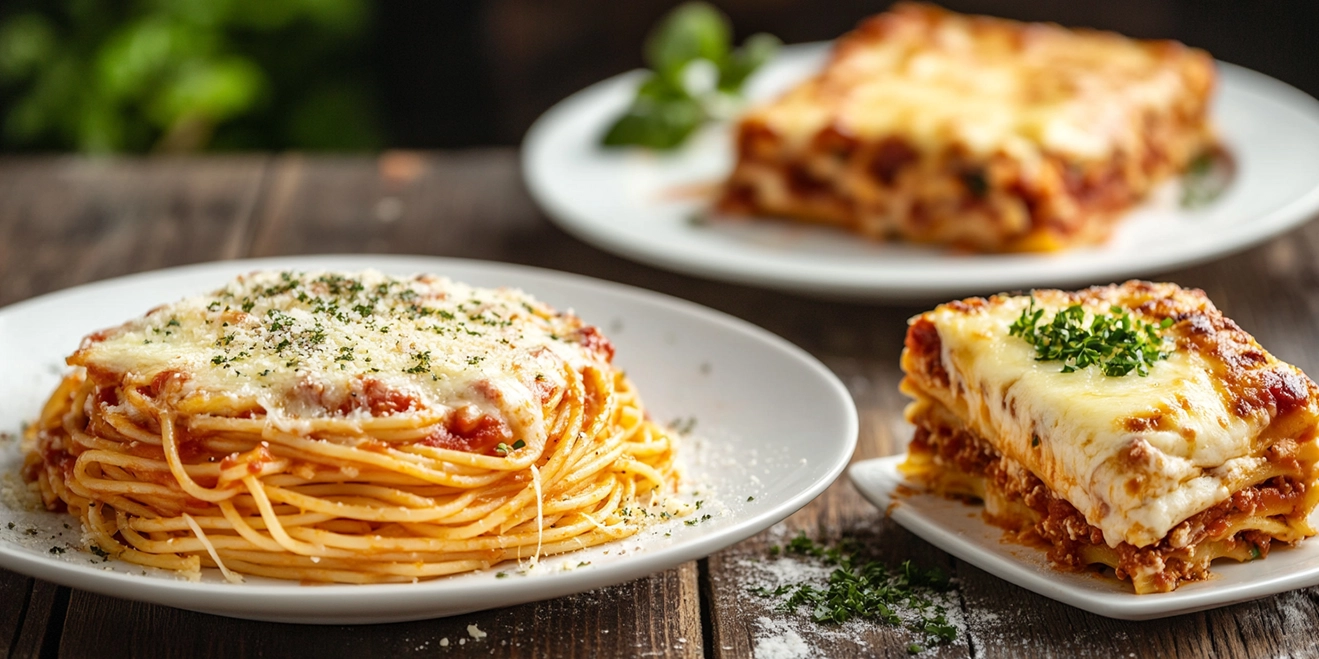
Table of Contents
Introduction To Baked Spaghetti
Baked Spaghetti and Lasagna are two beloved Italian-inspired dishes that have become staples in many households. They are hearty and delicious and feature layers of pasta, savory sauces, and melted cheese, making them perfect comfort foods for family dinners and gatherings. However, while they share some similarities, they are distinct in their Preparation, ingredients, and presentation.
Understanding the differences between baked Spaghetti and Lasagna is crucial, especially when deciding which to make. Knowing these differences can help you choose the dish that best suits your tastes, dietary preferences, and the time you have available to cook. Whether you’re craving the simplicity of baked Spaghetti or the layered richness of Lasagna, this guide will highlight the unique characteristics of each dish to help you make an informed choice.
What is Baked Spaghetti?
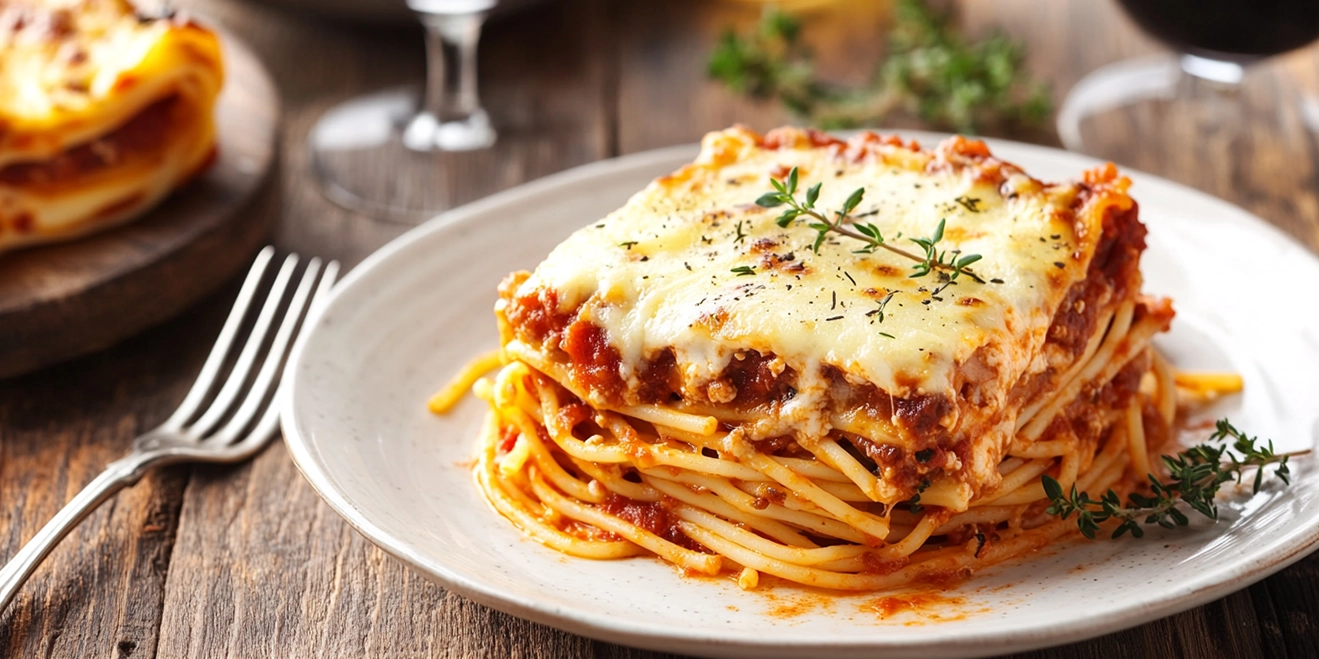
Baked Spaghetti is a hearty, comforting dish that combines cooked Spaghetti with a flavorful sauce, cheese, and other ingredients. The pasta is then baked in the oven until bubbly and golden. It’s a variation of traditional Spaghetti, but baking adds a crispy top and a more melded, savory flavor.
Ingredients Typically Used:
- Spaghetti pasta
- Ground meat (beef, pork, or a combination)
- Marinara or tomato sauce
- Cheese (mozzarella, ricotta, and Parmesan are ordinary)
- Onion and garlic (for added flavor)
- Seasonings like Italian seasoning, basil, and oregano
- Optional additions: bell peppers, mushrooms, or olives
The Preparation Method of Baked Spaghetti :
- Cook the Spaghetti: Boil the pasta in salted water until it’s al dente. Drain and set aside.
- Prepare the Sauce: Cook the ground meat with onions and garlic, add marinara or tomato sauce, and season it with herbs and spices.
- Assemble the Dish: Mix the cooked Spaghetti with the sauce. Then, layer it in a baking dish with ricotta or cottage cheese and mozzarella.
- Bake: Top with more cheese (mozzarella and Parmesan), and bake in the oven at 375°F (190°C) for about 20-25 minutes until the top is golden and bubbly.
- Serve: Let the baked spaghetti rest for a few minutes before serving.
What is Lasagna?
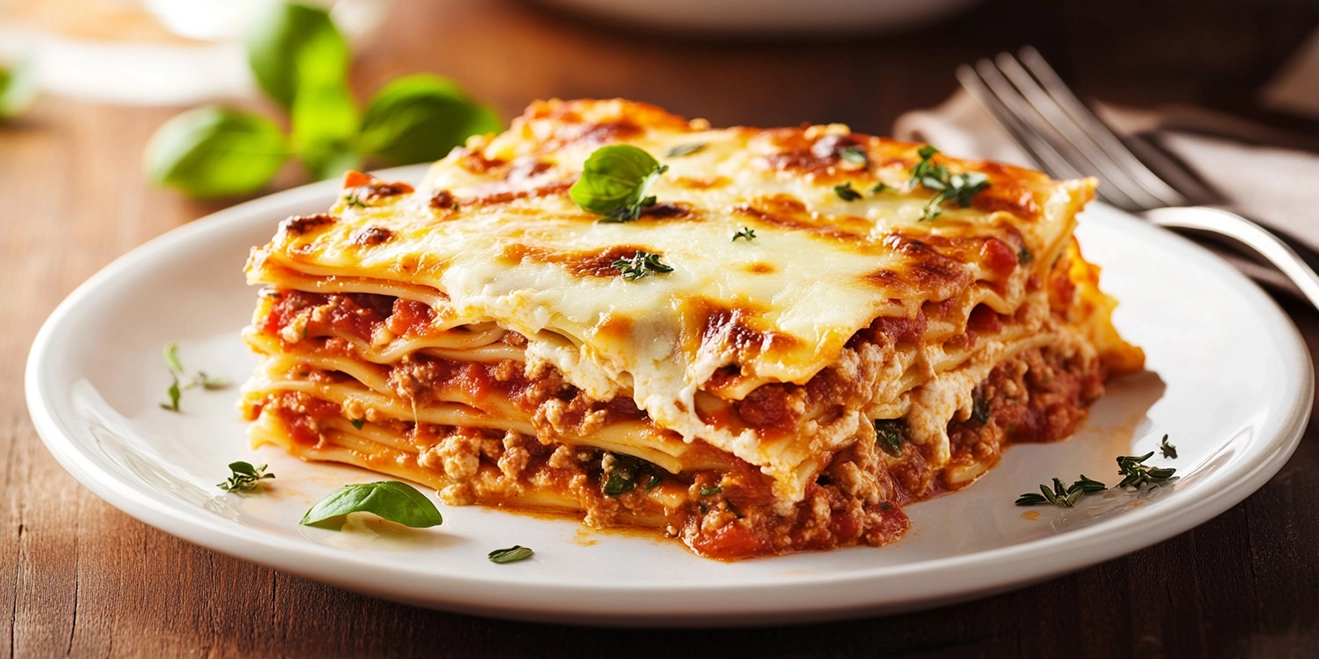
Lasagna is a classic Italian dish made of layers of broad, flat pasta, meat or vegetable fillings, sauce, and cheese, all baked together to create a rich and flavorful meal. It’s known for its hearty, comforting nature and is often served as a main course for family gatherings, holidays, or special occasions.
Key Ingredients of Lasagna:
- Lasagna noodles (wide, flat pasta sheets)
- Meat sauce (typically ground beef, pork, or a combination, cooked with tomato sauce and seasonings)
- Ricotta cheese (or cottage cheese as a substitute)
- Mozzarella cheese (for melting and added texture)
- Parmesan cheese (for topping and flavor)
- Eggs (often mixed with ricotta to create a creamy filling)
- Tomato sauce (marinara or homemade tomato sauce)
- Herbs and seasonings (garlic, basil, oregano, salt, pepper)
- Vegetables (optional: onions, bell peppers, spinach, or mushrooms)
How Lasagna is Traditionally Prepared:
- Cook the Noodles: Boil the lasagna noodles in salted water until al dente, then drain and set aside. If using no-boil noodles, skip this step.
- Prepare the Meat Sauce: Brown ground meat with onions and garlic, then add tomato sauce, seasoning with herbs, salt, and pepper. Simmer the sauce to melt the flavors.
- Prepare the Cheese Mixture: In a bowl, mix ricotta cheese, eggs, and Parmesan cheese to create the creamy filling. Some recipes may also include spinach or other vegetables.
- Assemble the Lasagna: In a baking dish, spread a layer of sauce on the bottom, followed by a layer of lasagna noodles, then the cheese mixture and mozzarella cheese. Repeat the layers, finishing with sauce and a generous topping of mozzarella and Parmesan.
- Bake: Cover with foil and bake at 375°F (190°C) for 30-40 minutes. Then, uncover and bake for 10-15 minutes until the cheese is golden and bubbly.
- Rest and Serve: Allow the Lasagna to rest for 10 minutes before cutting into it, ensuring the layers stay intact.
Key Ingredients Comparison
Pasta: Spaghetti vs. Lasagna Noodles
- Spaghetti: Spaghetti is a long, thin, cylindrical pasta commonly used in dishes like Spaghetti with marinara or meat sauce. Its texture is firm yet tender when cooked al dente, making it ideal for mixing with sauce.
- Lasagna Noodles: Lasagna noodles are wide, flat sheets of pasta designed to create layers in a baked dish. They are often slightly thicker than regular pasta and provide structure to hold the layers of sauce, meat, and cheese in Lasagna. Lasagna noodles can be either regular (which needs to be boiled before use) or no-boil (which softens during baking).
Meat: Ground Beef, Sausage, or Others
- Spaghetti: Ground beef is typically used in spaghetti dishes, although sausage, meatballs, or even turkey can be used. Ground beef is often browned and mixed with marinara or tomato sauce to create a rich, meaty sauce.
- Lasagna: Lasagna traditionally uses ground beef or pork in the meat sauce, but variations may include sausage, ground turkey, or a mix of different meats. Some lasagna recipes combine meat and vegetables, such as spinach or mushrooms. The meat is usually cooked with onions, garlic, and herbs and then mixed with tomato sauce for a flavorful filling.
Cheese: Types and Amounts in Both Dishes
- Spaghetti: Cheese in spaghetti dishes is usually served as a topping rather than an integral part. Parmesan or Pecorino Romano are the most common cheeses sprinkled over Spaghetti. Mozzarella may also be used in baked spaghetti variations.
- Lasagna: Lasagna is known for its generous use of cheese, with multiple types layered throughout the dish. The key cheeses used are:
- Ricotta cheese (or sometimes cottage cheese) forms a creamy layer mixed with eggs and herbs.
- Mozzarella cheese, which melts beautifully and provides a gooey texture.
- Parmesan cheese, often sprinkled on top for a sharp, savory finish.
Cooking Methods and Techniques
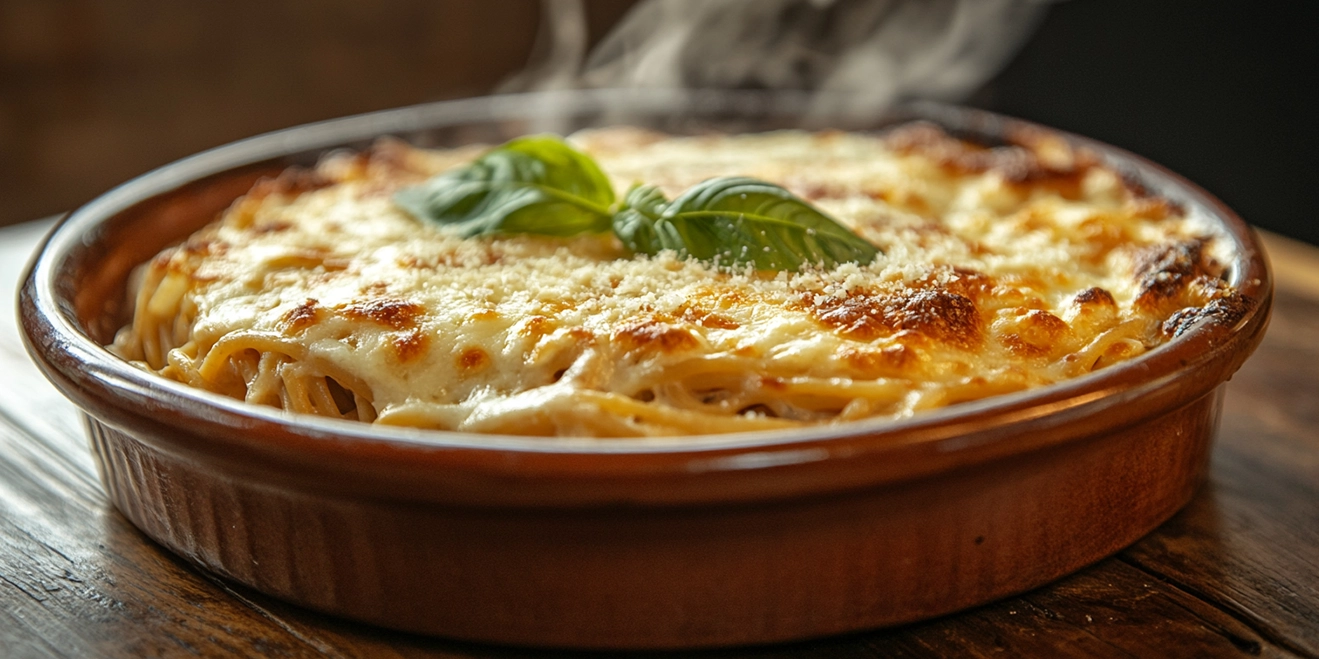
Baked Spaghetti: Boiling, Layering, Baking
- Boiling: The first step in preparing baked Spaghetti is to cook the noodles in a large pot of boiling salted water. The noodles should be boiled until al dente, drained, and set aside.
- Layering: After cooking the pasta, it’s combined with a sauce (such as marinara or meat sauce) and sometimes a layer of cheese (like ricotta or mozzarella). This mixture is spread in a baking dish, creating a base layer.
- Baking: The assembled dish is then baked in the oven, typically at 375°F (190°C) for about 20-25 minutes, until the top is golden and bubbly. Baking melts the flavors and gives the cheese a crispy texture.
Lasagna: Boiling, Layering, Baking
- Boiling: Like baked Spaghetti, lasagna noodles must be cooked until al dente is reached. No-boil lasagna noodles are an option that does not require boiling, as they soften during baking.
- Layering: Lasagna is built by layering cooked noodles, a meat or vegetable sauce, a cheese mixture (usually ricotta or a blend of cheeses), and mozzarella cheese in a baking dish. The layering process is repeated several times, finishing with a top layer of sauce and cheese.
- Baking: The Lasagna is baked at a similar temperature (375°F or 190°C) for 30-40 minutes, typically covered with foil to ensure even cooking. After uncovering, the Lasagna is baked for 10-15 minutes, allowing the cheese on top to melt and become golden.
Both dishes involve similar methods of boiling the pasta, layering the ingredients, and baking to achieve a delicious, comforting result. However, Lasagna requires more layers and typically takes longer to bake due to the multiple fillings.
Texture and Consistency
How Baked Spaghetti Differs in Texture from Lasagna:
- Baked Spaghetti: Baked Spaghetti’sspaghetti’s texSpaghetti is softer and more uniform, with the individual strands of pasta interspersed with the sauce and melted cheese. After being baked, the noodles absorb some of the sauce, giving them a tender, slightly moist texture, but they still retain their long, distinct shape. The cheese on top often creates a golden, slightly crispy crust, providing a contrasting texture to the soft pasta and sauce underneath.
- Lasagna: Lasagna has a more layered and structured texture. The wide lasagna noodles form distinct layers, creating a more substantial bite than Spaghetti. The spaghetti cheese mixture, often combined with eggs, provides a creamy, dense consistency, while the sauce and meat or vegetable filling add richness. The layers create a more complex texture, with some parts soft and others slightly firmer, depending on the number of layers and baking time. The top layer of cheese typically becomes golden and somewhat crispy, adding another layer of texture.
Importance of Sauce and Cheese in Both Dishes:
- Baked Spaghetti: The sauce in baked Spaghetti is vital to maintaining moisture and flavor. A good tomato or meat sauce is crucial for providing the dish with depth. Cheese, typically mozzarella and Parmesan, contributes to taste and texture, helping bind the Spaghetti and creating a slightly gooey, rich finish. The cheese on top adds a crispy, golden layer, enhancing the dish’s overall texture.
- Lasagna: In Lasagna, the sauce and cheese are essential to the dish’s overall success. The sauce, often a hearty meat sauce, adds richness and moisture to the dish, allowing the noodles and cheese to blend. The cheese mixture (often ricotta or cottage cheese combined with eggs and Parmesan) is crucial for creating a creamy filling that holds the layers together. The mozzarella provides a stretchy, melty texture, while Parmesan gives a sharp, salty finish. The sauce and cheese layers work together to create the dish’s distinct, layered texture and rich consistency.
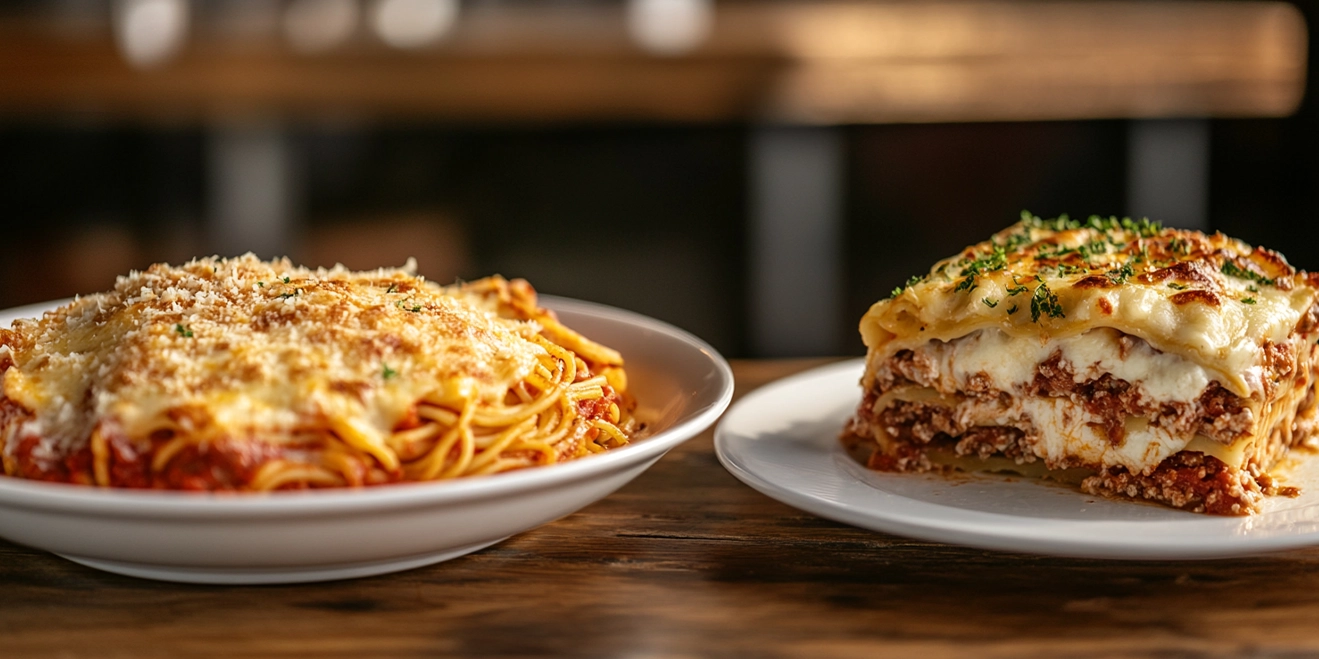
Nutritional Value and Serving Size
Comparing the Nutritional Content of Baked Spaghetti vs. Lasagna:
- Baked Spaghetti:
- Calories: A serving of baked Spaghetti 1 cup) typically contains between 300-400 calories, depending on the ingredients used (such as the type of meat, cheese, and sauce).
- Protein: The ground meat (beef, pork, or turkey) in the sauce provides a good source of protein, with a typical serving offering around 15-20 grams.
- Carbohydrates: The pasta contributes significantly to the carbohydrate content, with a typical serving containing 40-50 grams of carbohydrates.
- Fat: The fat content varies depending on the choice of meat and cheese. A serving may have around 10-20 grams of fat, with a mix of saturated and unsaturated fats.
- Fiber: Depending on whether vegetables like onions, peppers, or spinach are used in the sauce, baked spaghSpaghettiprovide 2-4 grams of fiber per serving.
- Lasagna:
- Calories: A serving of Lasagna (about 1 cup) generally ranges between 350 and 450 calories, depending on ingredients like the type of meat, cheese, and whether additional vegetables are included.
- Protein: Like baked spaghSpaghettiagna contains ground meats and cheese protein. A typical serving provides 20-25 grams of protein.
- Carbohydrates: Due to the layers of pasta and sauce, a serving of Lasagna contains around 35-45 grams of carbohydrates.
- Fat: Lasagna is often higher in fat due to the combination of cheese (especially ricotta and mozzarella), with a serving containing 15-25 grams of fat.
- Fiber: Lasagna can provide around 3-5 grams of fiber per serving if vegetables like spinach or mushrooms are added to the filling.
Serving Sizes and Their Impact on Portion Control:
- Baked Spaghetti: A typical serving of baked spaghSpaghettiround 1 to 1.5 cups. The portion size can be adjusted based on ingredients and personal preferences. However, because the pasta and cheese are prominent, the dish can be quite filling, and larger servings can significantly increase calorie intake. It’s crucial to balance portion sizes to maintain portion control, especially when paired with high-calorie ingredients like meat and cheese.
- Lasagna: Lasagna is usually served in more significant portions due to its layered nature, typically around 1 to 1.5 cups.
Impact on Portion Control: Both dishes can be high in calories and fat, so controlling serving sizes is key to managing overall intake. While baked Spaghetti seems lighter, Lasagna’s density makes it filler per serving. To control portion sizes, consider serving with a side salad or lighter vegetable dish to balance out the meal and reduce overall calorie consumption. Reducing cheese or using leaner meats can help manage nutritional content while enjoying these comforting dishes.
Time and Ease of Preparation
How Long Does It Take to Prepare Baked Spaghetti?
- Preparation Time: Preparing baked Spaghetti is relatively quick. It typically takes 10-15 minutes to cook the Spaghetti, prepare the sauce (this can be even faster if using pre-made sauce), and mix the ingredients together.
- Baking Time: After assembling, bake the Spaghetti for 20-25 minutes in the oven until the cheese is melted and the top is golden and bubbly.
- Total Time: Overall, baked spaghSpaghettibe is ready in about 35-45 minutes from start to finish, making it a relatively quick and easy dish to prepare.
How Long Does It Take to Prepare Lasagna?
- Preparation Time: Lasagna requires more preparation time. It typically takes 20-30 minutes to boil the noodles, prepare the sauce, and layer the ingredients (especially if using a homemade meat sauce and a cheese mixture).
- Baking Time: Lasagna must bake for 30-40 minutes, typically covered with foil, and an additional 10-15 minutes uncovered to allow the cheese to brown.
- Baked Spaghetti: Baked Spaghetti is faster to prepare due to its simpler assembly and shorter baking time. It’s an excellent choice for weeknight dinners or when you need a meal in a pinch.
- Lasagna: Lasagna requires more steps, including more extended preparation and baking times, which can make it more involved.
Conclusion
- Baked SpaghSpaghettiuicker is more straightforward to prepare and has a shorter cooking time. This makes it ideal for busy weeknights or when you’re looking for a fuss-free yet delicious meal. The dish is flexible, allowing for easy customization with various sauces and meats, and is generally lighter in texture.
- On the other hand, Lasagna is more time-consuming and involves more intricate layering, but the effort results in a hearty, multi-layered dish with a rich and complex texture. Lasagna is perfect for special occasions, family gatherings, or when you have extra time to spend in the kitchen.
